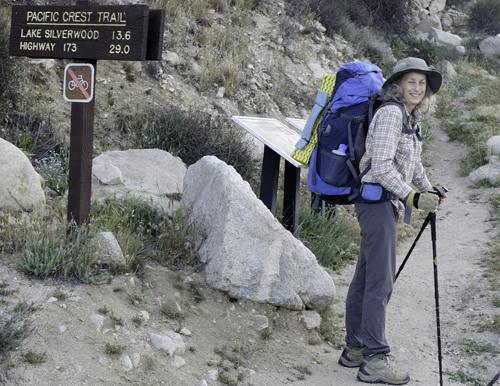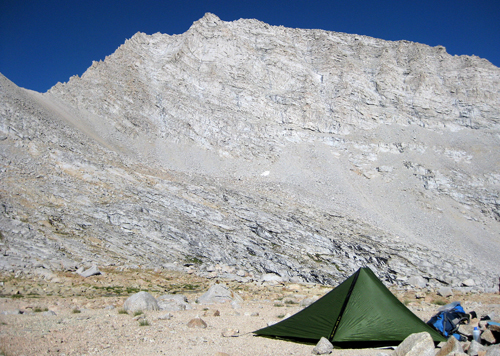 |
||||||
|
Equipment |
||||||
|
I started this journey not knowing if it was something I would take to the end. With that in mind I didn't want to spend a lot of money on new equipment, and knew if I did continue after my first section that I would observe and learn from other hikers what equipment seemed to be the most popular. After nine years of being on the PCT I have seen the evolution of light weight gear and clothing. I'm sure if I was just starting out today I would have a completely different list.
Tent: I hiked the first years using the fly to my old tent, a ground cloth and my hikiing poles. I spent the first four section hikes observing other hiker's tents and searching on the internet. In 2014, when I hiked the Sierras, I bought a Six Moons Designs, single tent because it was lightweight at 1lb 10 oz (with stakes) and affordable. It has held up in every weather situation I been dealt. There are 3 main stakes and I've learned that the head single stake is the most important and the one that must hold. After six years, and over 2000 miles, the only failure has been the fly zipper now beginning to separate but the two velcro tabs have helped keep it together. Time for a new tent?
Infatable Pillow: After my first season I knew I had to get a pillow. Stuff sacks weren't working for me. I bought a small Exped and made a pillow case that could be washed. I love it!! Sleeping Pad: I started out with the foam Z-Pad and used it that until recently. I heard stories of inflatables getting leaks and I when I'd camp near someone with an inflatable I would hear every movement of the sleeper. In 2019 I finally broke down and bought an Alps Mountaineering self -inflating pad at 1lb 3 oz, which makes no noise, and yes, I've been very happy. Boots: My first pair of boots started breaking down at 500 miles. I then bought a pair of Keen's Voyager which lasted me 1100 miles. I'm now on my 3rd pair so I must like them. The main plus for me is the large toe box. Everyone has to find their own perfect boot.
Clothing: The only thing I want to say about clothing is that after going through two pairs of hikiing pants, my third pair are my favorite, North Face Aphrodite. I never thought I'd like a pair of eleastic waist pants but these are the most comforable pair of pants I've every worn. And while I lose weight on the trail I don't have to wear a belt to keep my pants on! One less item to rub between the back waist belt and me. Electronics: This is the area where things have changed the most over the years. In 2012 when I started on my first section some hikers had Half Mile maps on their smart phones while other hikers were using Half Mile paper maps. As the years went on almost every hiker was using a smart phone with Half Mile maps loaded. Now the Guthook app for smart phones is used by the majority of hikers, it's Guide Book listing water sources, towns and services, etc, so that a hiker doesn't have to think. As for safety, early on the Spot, Delorme inReach and ResQLink were used for sending messages and tracks, while also a means of requesting help. Now the popular unit is the Garmin InReach whick can send messages, receive weather info, request help, and more. While all this new technology is great, I feel it distracts from the adventure of discovery, one of my main reason for backpacking. I have stayed non-technical preferring paper maps requiring me to pay more attention to my environment and location. I also have a Garmin eTrex GPS with Half Mile tracks loaded onto a topo map for moments when I need to know if I've gone off track, which happens. For personal safety and to prevent any necessity of a search, I carry a ResQLink miniture EPIRB 406 MHz beacon. I don't own a smart phone preferring to use an old flip phone, until I'm forced to upgrade. |
 Backpack:
Backpack: Sleeping
Bag
Sleeping
Bag Socks
Socks